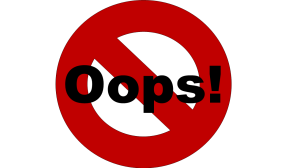As a corporate copywriter and editor I’ve been grappling with this problem now for 10 years at 2 different companies: What should be our standard style for formatting phone numbers? Do we put the area code in parentheses? Do we use dashes, periods or spaces between groups of digits? Which style is the most mobile friendly? Which style is most recognizable internationally?
Don’t look at Apple for phone number style
So, as marketing creative types often do, I looked to the Apple website for an example of the best, most user-friendly design for phone numbers. And here is what I found on the U.S. Apple Contact Us page:
Notice how many ways phone numbers are presented, all on the same page? (Click the image to enlarge it and see.)
I’m seeing digits with dashes only; digits mixed with letters and dashes; parentheses, digits and letters; digits and periods; AND the old school style with area codes in parentheses with local digits separated by a hyphen. Also, sometimes they include 1 before the area code, and sometimes they don’t.
That’s 6 (SIX!) different phone number styles on the same page.
How could this happen? I can hazard a few guesses:
- It’s a test – the Apple designers want to know which styles work best, so they are trying them ALL.
- The person Apple assigned to maintain the page is cutting and pasting the numbers from multiple sources and not reformatting them to follow a unified style because they don’t know which style is right.
- Multiple people are putting information on this page, and they are paying no attention to how the rest of the page looks.
- Multiple people are putting information on this page, and they are refusing to conform to a uniform style because they each think their style is best.
I would think Apple would care about having a consistent phone number style on its website, so perhaps the current page really is just a test and is only temporary.
By the way, one consistent element of the phone numbers on the Apple Contact Us page was that I could click to dial them all on my iPhone. Good coding! (Can’t say I don’t give credit where it’s due.)
What is the best phone number style, then?
There doesn’t seem to be a consensus. The default (international) Google Contact Us page gives the +1 country code and then just has spaces between groups of digits. While this is a common international phone number style, it does require conscientious coding sometimes to make sure that the phone number is read as a unit.
My preference for U.S. phone numbers is to use dashes: 123-456-7890. This the style preferred by the Associated Press Stylebook. It ensures the number stays together as a unit, the number is able to wrap around of line if it has to, and the dashes make the number stand out well in running text.
Putting the area code in parentheses doesn’t make sense to me anymore, since area codes are so seldom optional now – many people keep their number when they move out of area, and some areas require the code even when you are in bounds. And parentheses mean “optional,” in my book.
As for phone numbers with periods and spaces, they don’t wrap well at line breaks. Granted, it’s best not to wrap phone numbers around lines if you can help it, but still, it happens.
However, for international phone numbers, I do prefer spaces: +1 123 456 7890. This is because, typically, on corporate sites international numbers often appear in a list, and there is so much variation in international phone number formats that you can never get all the hyphens or periods to line up. It can get looking really messy, like ants are dancing among all the digits on the page.
I’ve been trying to discover the optimum phone number style that smartphones will recognize (without coding), but I’m finding that there’s too much variation across different kinds of phones right now. When I sent phone numbers in the most common styles to myself in an email, I could click to call all of them from my iPhone, but my colleague tells me that phone numbers with periods aren’t always clickable on her iPhone. Meanwhile, my husband couldn’t click to call any of them on his current Android phone (though he could on his previous Android phone).
If you know an authoritative source for the best phone number style, please let me know. In fact, let the world know – and it wouldn’t hurt to drop a line to Apple while you’re at it.


